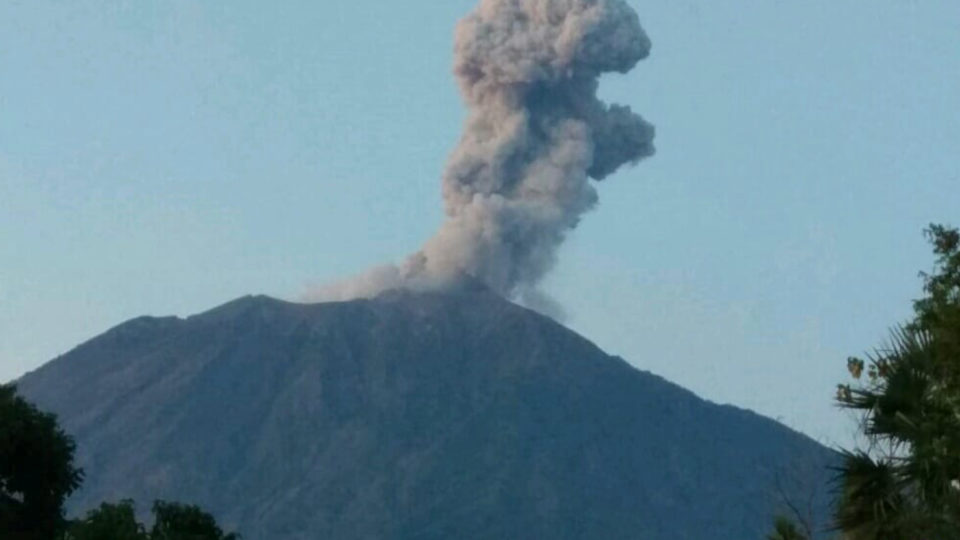Bali’s rumbling volcano Mount Agung let out three more eruptions early on Monday morning, but the island’s international airport remains operational for the time being.
After several months of near silence, the volcano spat up smoke on Thursday afternoon, triggering evacuations in the immediate area and a nearly 12-hour airport shutdown on Friday.
Monday’s eruptions saw ash shoot up into columns reaching 2,000 meters above the crater.
“The airport is safe because the volcanic ash is heading west,” said Bali airport spokesman Arie Ahasanurrohim on Monday, as quoted by Tribun Bali.
Mount Agung is located in Bali’s eastern Karangasem regency, about 75 kilometers northeast from the tourist hub of Kuta.
According to a seismograph recording at the Mount Agung observation post in Rendang Village, the quakes of the first eruption lasted 3 minutes 47 seconds with a maximum amplitude of 18 mm. While the following two eruptions were recorded with quakes lasting 2 minutes 11 seconds and 2 minutes 38 seconds, respectively.
However, despite these eruptions, the warning status of “standby” level III (the second highest level), has not been raised, according to Kasbani, the head of Indonesia’s Volcanology and Geological Disaster Mitigation Center (PVMBG).
“From June 27 to July 2, 2018 at 9am, the height of the eruption columns (ash and gas) tended to decline, but not significantly from 2,500 meters above the peak,” he said, as quoted by Kompas.
Magma is still at the surface of the crater, which is apparent from the orange-red glow that be seen at the moment during nighttime.
An exclusion zone of four kilometers from Mount Agung’s crater has been in place and people are forbidden from climbing the volcano at the moment.
“The people who live and move around the river basin in Mount Agung should be aware of potential ‘secondary hazards’ like cold lava flows that can occur, especially during the rainy season and if the eruption materials are still exposed,” Kasbani said.
Before stirring back to life last year, Mount Agung last erupted in 1963, killing around 1,600 people.




